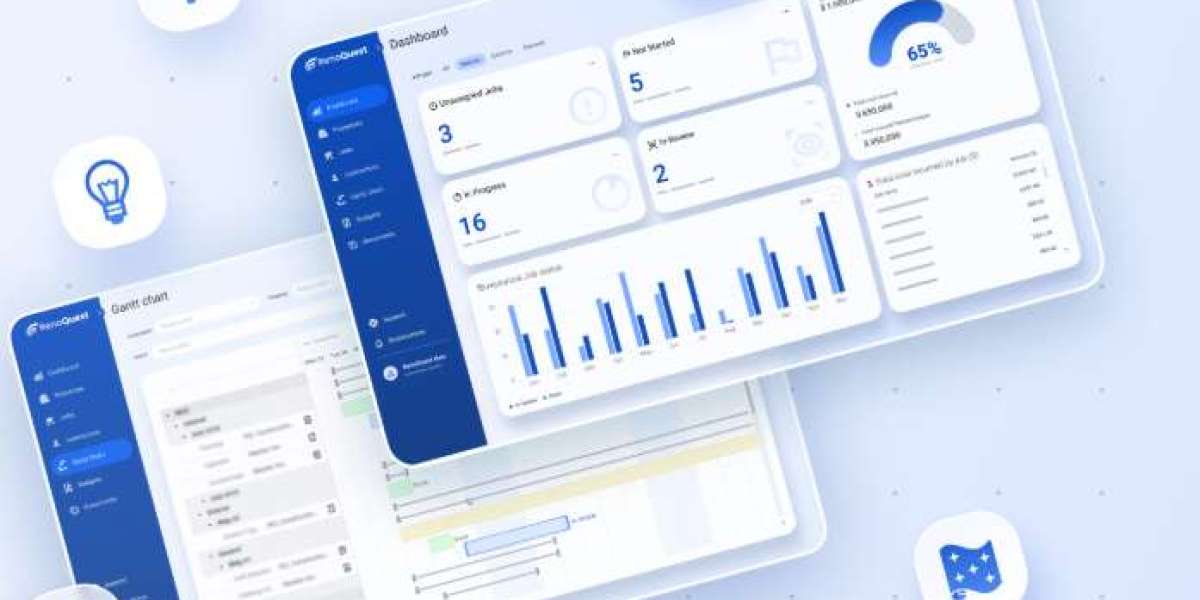Why Customize Odoo ERP?
Odoo's strength lies in its modular approach. You can start with basic modules like Sales, CRM, Inventory, and Accounting, then add or modify modules according to your business requirements.
However, industry-specific challenges often require deeper customization:
Unique workflows that aren’t supported out of the box
Regulatory compliance specific to a sector (e.g., HIPAA in healthcare)
Special reporting formats required by clients or authorities
Legacy system integrations that demand custom connectors
Without proper customization, businesses may find themselves trying to fit square pegs into round holes — adapting their processes to the software instead of the other way around.
Key Areas Where Odoo Can Be Customized
Here are the most common elements of Odoo that can be tailored to meet industry-specific needs:
Custom Modules
New features or apps specific to your business logic.
Workflows
Streamlined process flows using automated actions and triggers.
User Interfaces
Tailored dashboards and forms for different user roles.
Reports
Custom financial, operational, and compliance reports.
Third-Party Integrations
APIs for e-commerce, logistics, payment gateways, and more.
Security and Access Control
Granular control based on department, designation, or project.
Localization
Support for regional languages, tax laws, and currencies.
Best Practices for Customizing Odoo ERP
Customizing Odoo ERP can yield powerful results when done right. Here are some best practices to follow:
1. Start with a Gap Analysis
Before customizing, conduct a gap analysis to identify:
Which processes are not supported by default
Bottlenecks in your current system
Compliance and reporting requirements
This ensures you only customize where necessary.
2. Use Standard Modules Where Possible
Always try to use or slightly tweak existing modules before developing new ones. This saves time, reduces cost, and ensures better compatibility with future Odoo updates.
3. Adopt a Modular Approach
Avoid building large monolithic customizations. Break them down into smaller, manageable modules. This allows for easier maintenance and scalability.
4. Ensure Compatibility with Odoo Upgrades
Custom modules should follow Odoo development standards to ensure they remain compatible with future versions. Use official documentation and Odoo Studio for minor customizations.
5. Test Extensively Before Deployment
Use a staging environment to test customizations thoroughly. Simulate real-life scenarios to ensure reliability, performance, and data integrity.
6. Invest in User Training
Customization is futile if your team doesn’t know how to use it. Train end users on new workflows and provide manuals or cheat sheets.
7. Document Everything
Keep documentation for all customizations—code changes, workflows, user permissions, and integration logic. This is crucial for onboarding, support, and upgrades.
8. Partner with Experienced Developers
Work with Odoo-certified developers or consultants who understand both the technical framework and your industry’s needs. A poor Odoo ERP implementation can cost more in the long run than a well-planned deployment.
Real Use Cases of Odoo ERP Customization by Industry
1. Manufacturing
Challenge:
A mid-sized automotive parts manufacturer needed real-time tracking of work orders and raw material consumption, which the default Odoo Manufacturing module didn’t support completely.
Customization:
Created a custom BOM (Bill of Materials) management module.
Integrated barcode scanning for inventory movement.
Developed custom reports for downtime tracking and quality assurance.
Result:
Production efficiency improved by 25%, and stock discrepancies were reduced by 80%.
2. Retail and eCommerce
Challenge:
A multi-channel retailer wanted seamless integration between its website, Amazon store, and physical POS systems, including unified customer data and inventory.
Customization:
Integrated Odoo with Amazon Marketplace and Shopify.
Built a centralized loyalty system applicable across online and offline channels.
Custom UI for fast checkouts and returns.
Result:
Sales increased by 40% due to better customer experience and real-time inventory synchronization.
3. Healthcare
Challenge:
A clinic required HIPAA-compliant patient management, appointment scheduling, billing, and electronic health records (EHR).
Customization:
Developed secure patient data storage with restricted access.
Integrated Odoo with third-party EHR systems.
Automated insurance claims and co-pay processing.
Result:
Billing cycle time reduced by 60%, and compliance risks were minimized through data governance.
4. Real Estate and Property Management
Challenge:
A real estate firm needed property listing management, lead tracking, and contract management in one place.
Customization:
Custom module to manage properties, leases, and commissions.
Automated follow-ups for prospects and tenants.
Digital signature integration for lease agreements.
Result:
Deal closure rate improved by 30%, and administrative workload was significantly reduced.
5. Education
Challenge:
An educational institution wanted to manage student enrollment, course scheduling, attendance, and grading.
Customization:
Built a student information system (SIS) on top of Odoo.
Teacher dashboards with class schedules and grading tools.
SMS/email notifications for parents.
Result:
Administrative staff could process 3x more applications with fewer errors, and student engagement improved through timely updates.
Tools and Technologies to Support Customization
To fully leverage Odoo’s customization capabilities, you’ll need:
Odoo Studio: Drag-and-drop tool for quick changes.
Odoo.sh: Odoo’s cloud hosting and deployment platform.
Python: Main programming language for backend development.
PostgreSQL: Odoo's underlying database system.
XML & QWeb: For front-end views and reports.
Git: Version control for managing code changes.
REST/SOAP APIs: For third-party integrations.
The Role of Odoo Partners
Official Odoo partners are certified developers and consultants trained to offer custom solutions and support. Working with a partner ensures:
Faster development cycles
Better alignment with business goals
Fewer bugs and maintenance issues
Efficient upgrade paths for future versions
Look for partners with industry-specific experience, proven portfolios, and good client reviews.
Conclusion
Odoo’s flexible and modular architecture makes it an excellent ERP platform for businesses across various industries. However, unlocking its full potential requires thoughtful customization aligned with your specific workflows, compliance requirements, and business goals.
By following best practices—starting with gap analysis, leveraging existing modules, and ensuring robust documentation—you can build a tailored ERP system that improves efficiency, accuracy, and decision-making.
Whether you’re in manufacturing, healthcare, retail, education, or real estate, a properly planned and executed Odoo ERP implementation can become the backbone of your digital transformation journey.






